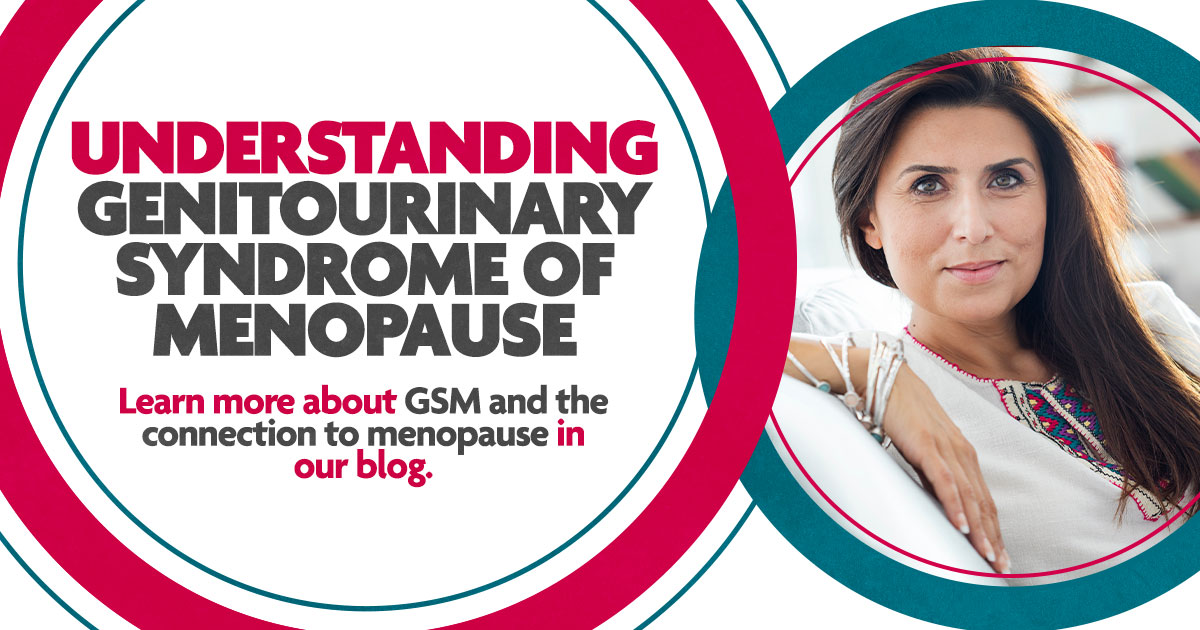Most women have never heard of Genitourinary Syndrome of Menopause (GSM), formerly known as Vulvovaginal Atrophy (VVA) even though it affects up to 45% of peri- and postmenopausal women. It is caused by the lower estrogen levels that occur after menopause which cause thinning of the vaginal and vulvar tissues, which is also known as atrophy. This atrophy can also affect premenopausal women, including women who are lactating, due to a state of lowered estrogen. So, ladies, don’t suffer in silence. Menopause may bring its challenges but keeping GSM under control doesn’t have to be one of them. Take control of your sexual health and check out our blog for more on the reality of menopause with GSM!
GSM 101 – The Need to Know
Genitourinary Syndrome of Menopause, or GSM for short, is a common but often overlooked condition that many women experience at some point in their life. Atrophy can occur at any time in a woman’s life but is most common during the postmenopausal phase. GSM is caused by a decrease in estrogen levels and can lead to symptoms such as dryness, itching, burning, and even pain during sex. It’s not just uncomfortable; other symptoms can include urinary tract infections and urinary problems such as urgency and incontinence.
Is It GSM or a Yeast Infection?
When it comes to issues “down there,” it can often be difficult to distinguish between a yeast infection and GSM . Both can cause itchiness and irritation, as well as occasional burning during urination or sexual intercourse. However, GSM typically presents with additional symptoms such as dryness, pain during sex, and even sometimes light bleeding after intercourse due to damage from thinning tissues. While a yeast infection may produce a thick, white discharge, GSM usually results in little to no discharge at all. However, it’s important to note that these conditions are not mutually exclusive. GSM can sometimes lead to an increase in yeast and other infections due to its effects on the vagina’s pH and natural balance of bacteria in the vagina. Note that there are many potential causes for these symptoms, and any unusual symptoms, especially postmenopausal bleeding and spotting, should be evaluated at the doctor’s office.
Treatment Options – There’s Hope Beyond the Discomfort
Fortunately, there are a variety of treatment options available. Topical estrogen creams, low-dose vaginal estrogen tablets, and oral medications can all help to restore moisture and elasticity to the vaginal tissue. For those seeking a non-hormonal alternative, regular use of lubricants or moisturizers can alleviate symptoms as well. Lifestyle changes can also be highly effective; quitting smoking and continuing to participate in sexual activity can have a positive impact on blood circulation, vaginal pH, and overall vaginal health. So, whether it’s through modern medicine or some old-fashioned TLC, there are plenty of ways to ease the discomfort associated with GSM.
So next time you experience vaginal discomfort, remember it could be something other than just a yeast infection. Knowing the difference could make all the difference in finding appropriate treatment!
At Seattle Clinical Research Center, we believe in advancing health options for women everywhere through compassionate care. Follow this link to sign up for a future study or visit our website to explore currently enrolling studies! Better health practices are a form of self-care. Choose you today. Interested in learning more? Contact us at (206) 522 – 3330 ext. 2 with your questions!
Resources:
https://www.ncbi.nlm.nih.gov/pmc/articles/PMC2800285/
https://menopause.org/for-professionals/not-time-to-abandon-use-of-local-vaginal-hormone-therapies


